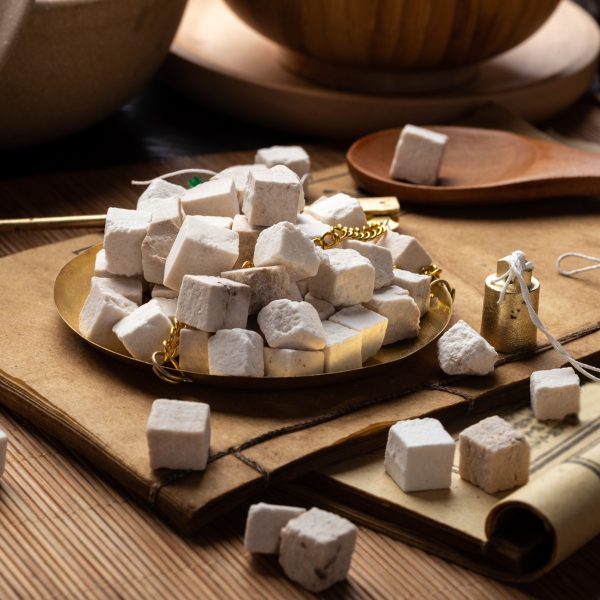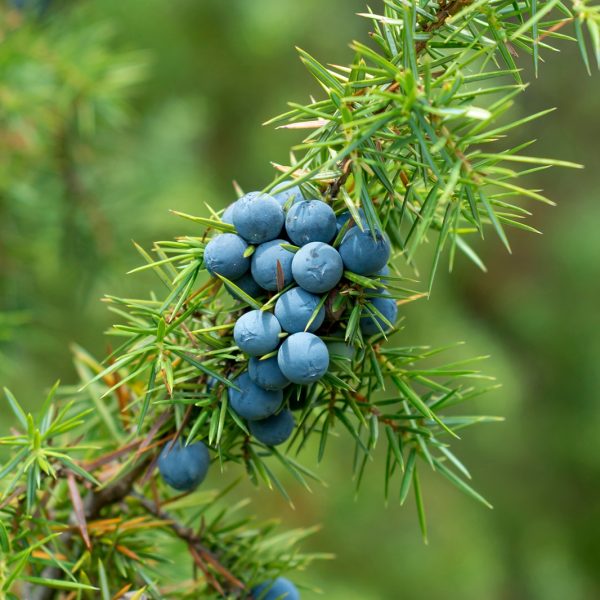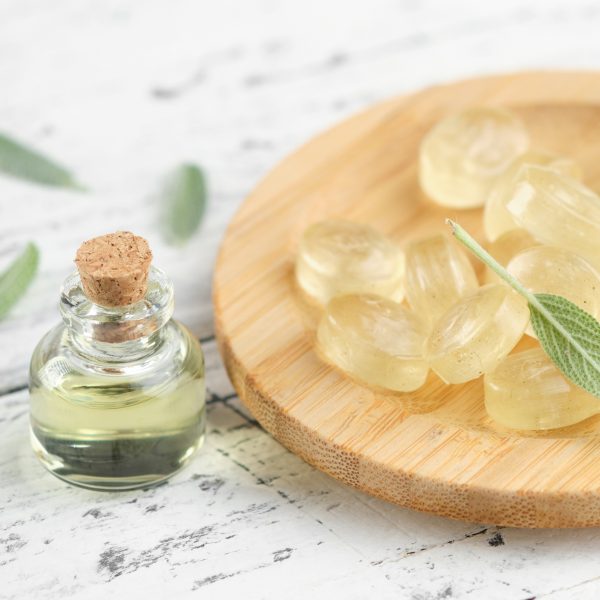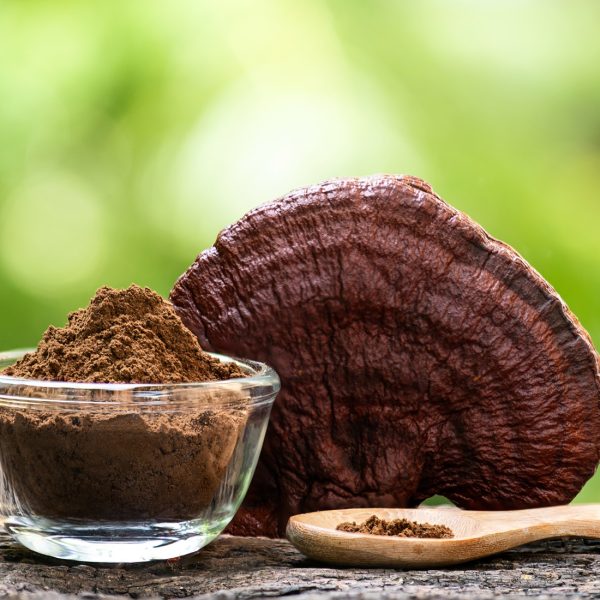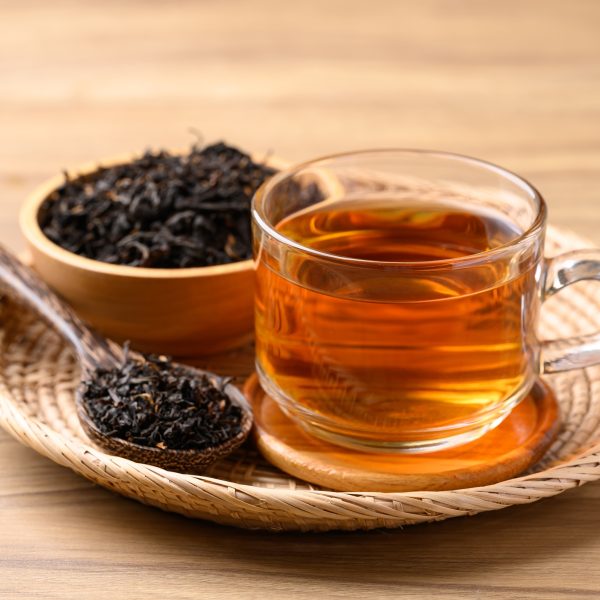-
How does it feel?
Oregon grape root tastes bitter and astringent. The bitterness comes from the bitter alkaloids, which are responsible for many of the medicinal actions. The astringency comes from the tannins which dry up excess secretions throughout the body. The combination of the tannins, bitter alkaloids and resins will leave a dry and slightly tacky taste in the mouth.
You can make a decoction (tea which is simmered for 5–20 minutes). However, this has a strongly bitter taste which is not for the faint-hearted and makes it very much a medicinal drink, as opposed to an enjoyable tea. It is more usual to take this herb as a tincture.The bitterness has an action on the liver and gallbladder, stimulating the release of gastric secretions, which support and improve the digestive processes. This stimulation of the liver encourages the detoxification processes of this organ, cleansing the blood and promoting the excretion of toxins and waste from the body. You can find out much more details about how bitters work in our article “Bitters: Why herbalists love them and how they help digestion“.
-
What can I use it for?

Oregon Grape flowers (Berberis aquifolium) Oregon grape root is used both internally and externally treat a range of skin and digestive conditions. The internal uses relate to the digestive stimulation and systemic cleansing of toxins from the body, while to external uses are for acute and chronic skin conditions and infections. Broadly, the indications are for: acne, boils, eczema, psoriasis, skin infections, fungal infections, diarrhoea, dysentery, gastritis, salmonella and shigella.
Skin
Topical skin applications: psoriasis, atopic eczema, dermatitis, acne, skin infections, fungal infections.
Psoriasis
The alkaloid constituents in Oregon grape root reduce the antibodies which cause the hyperproliferation (rapid growth) of keratinocytes (skin cells) seen in psoriasis (1). This slows the rate of skin cell renewal, reducing psoriatic lesions (1). These constituents are strongly anti-inflammatory, calming and cooling to the hot inflamed state of a psoriatic flair up (2).
Eczema
Topical application of Oregon grape root can reduce the size of eczema patches and improve the associated itchiness (3).
Skin infections
Oregon grape root has antimicrobial activity against a wide range of microbes which cause bacterial, protozoal and fungal infections (4). It is the antibacterial activity against Staphylococcus aureus which makes it effective in treating localised skin infections, which are commonly causes by this bacteria (5). Infected wounds from abrasions, and damage to the skin from scratching eczema, psoriasis or other skin irritations can all be treated topically. Oregon grape root is antibacterial against Propionibacterium acnes, the bacteria in acne (6), and antifungal against Candida species (7). Overgrowth of Candida can result in fungal (yeast) infections on the skin and on the mucus membranes of the mouth, intestines and vaginal (7). Oregon grape root is not a systemic antimicrobial, meaning these properties do not transfer well into the bloodstream, and the actions work locally on the skin and on the internal lining of the digestive tract (8).
Internal use for skin conditions
The internal use is indicated for chronic skin conditions such as acne, boils, herpes, eczema, and psoriasis (9). The internal action in these conditions is not via an antimicrobial mechanism, but a broader cleansing action throughout the body to clear toxins, stagnation, inflammation and heat. Chronic skin conditions can be due to poor digestion which can lead to a build-up toxins and stagnation in the digestive tract. The liver is the main organ of elimination, responsible for breaking down toxins and supporting digestion and removal of waste from the body. When the liver is not functioning optimally it can become congested and other eliminatory organs such as the skin can become overwhelmed. Oregon grape root can help return the healthy functioning of the liver, which will nudge the body back to a state of health by using its own detoxification, cleansing and elimination processes. You can read more about the detoxification and elimination processes in the body here.
Gastrointestinal system
The combination of the bitter stimulation and the antimicrobial actions makes Oregon grape useful for various gastrointestinal problems, such as: dyspepsia (indigestion), peptic ulcers, gastro-oesophageal reflux disease (GORD), nausea, constipation, and intestinal infections (2,9,10).
The bitter action stimulates the digestive processes by activating the liver and gall bladder and awakening the appetite. A slow and sluggish digestion is associated symptoms of dyspepsia (indigestion), nausea, constipation, headaches, malaise, and fatigue, which can all be relieved by the bitter action (9,10).
Gall bladder
Oregon grape root is indicated for use in gallbladder disease and gallstones (9,11). It is the anti-inflammatory and antioxidant actions of the berberine alkaloids which indicate use here (11). These constituents may also decrease the rate of cholesterol stone (gallstone) formation (11). Evidence for this comes from an isolated anti-inflammatory molecule in an animal model (12), with research in humans required to determine if Oregon grape root can reduce gallbladder inflammation or prevent gallstone formation.
Intestinal infections
Oregon grape root indicated for intestinal infections (for example staphylococcus aureus and salmonella), dysentery, and gut dysbiosis (9). The combined actions of blood purification, the stimulating action on the liver and gallbladder, as well as the antimicrobial properties all contribute to the overall efficacy for these types of infections.
Inflammatory bowel conditions
Immunological reactions and inflammatory molecules play a significant role in IBS (irritable bowel syndrome) symptoms. Similarly, inflammatory bowel diseases (ulcerative colitis and Crohn’s disease) are characterised by high levels of inflammation in the colon from an abnormal immune response to the microbiota (13). The alkaloids in Oregon grape root, including berberine, have poor bioavailability, meaning they are difficult to transport across the intestine into the blood (14). However, this is beneficial for keeping the berberine where it can exert its anti-inflammatory and antimicrobial action directly within the intestines (13).
Oral infections
Oregon grape root has antimicrobial action against many strains of bacteria found in the mouth, suggesting use as a mouthwash for oral infections such as gingivitis (15).
Musculoskeletal
The anti-inflammatory and depurative actions make Oregon grape root suitable for conditions of gout, rheumatism, and arthritis (9). It is indicated when joints are inflamed due to poor cleansing and removal of metabolic waste from the tissues, by supporting the clearing and cleansing of stagnation in the body (16).
-
Into the heart of oregon grape root

Oregon Grape root dried (Berberis aquifolium) Oregan grape root is cooling and drying, which helps to clear the heat of inflammation and dry up phlegmy conditions (9). The strong bitter flavour stimulates movement throughout the systems of the body, ideal for clearing heat and shifting stagnation (8). Many of the conditions this herb is indicated for stem from a need to support the body’s natural detoxification and elimination processes.
Antimicrobial
The anti-microbial actions that make it beneficial to the skin and digestive tract are due to the bitter alkaloid constituents, including berberine. Berberine is used to reduce inflammation and inflammatory disorders, is strongly antimicrobial, and be can used in infections and microbial pathologies (2). Both the whole plant extract and the isolated alkaloid constituents are antibacterial against Staphylococcus species and Propionibacterium acnes, which are common bacteria in localised skin infections and acne, respectively (6). Similarly, the antifungal activity of the constituents in Oregon grape root extract are effective against protozoa, and fungi including Candida species (7,5).
Antibiotic
The broad spectrum antimicrobial activity of berberine extends to an action against antibiotic resistant bacteria such as MRSA (methicillin-resistant Staphylococcus aureus). MRSA causes serious infections by preventing pharmaceutical antibiotics from killing the bacteria. Berberine does not act directly as an antibiotic against MRSA, but works synergistically with some antibiotic medications, allowing them to remain effective against MRSA (41). Additionally, the antifungal action can prevent the overgrowth of fungi (yeast infection), which is a common side effect of pharmacological antibiotic treatments (18). The combination of the antibiotic and antifungal actions merits the use of berberine-containing herbs such Oregon grape root alongside antibiotic treatments. Increasing rates of antibiotic resistant bacteria strains are presenting a real threat to the efficacy of many life-saving pharmaceutical antibiotics, meaning herbal alternatives are becoming ever more vital. You can read more about the antibiotics crisis and herbs as antibiotics here.
Immune-modulation
It is likely the anti-inflammatory effects of Oregon grape root stem from the effect of bile acids within the intestines. The bitter action stimulates bile acid release, which act on receptors in the intestine (FXR) that regulate the release of inflammatory molecules (19). Oregon grape root is anti-inflammatory because it promotes the release of the anti-inflammatory molecules and inhibits certain pro-inflammatory molecules (13,20,42). These pro-inflammatory cells play a key role in psoriasis, by triggered keratinocyte (skin cell) proliferation and creating the inflamed skin lesions (1,21). This anti-proliferative activity of Oregon grape root extract has been demonstrated in human keratinocytes both in cell cultures in vitro (22) and in a human clinical trial (1). Similarly, it is the suppression of the inflammatory molecules which trigger atopic dermatitis that explains the mechanism of efficacy in eczema (23). You can read more about the immune system and holistic herbal support here.
Energetics
From an energetic perspective the cooling action makes it suited to fiery emotions, when there is anger, irritability and those prone to self-criticism and perfectionism (9). Similarly, the flower essence can be used to transform self-criticism into acceptance and self-love (24). The flower essence also imbibes a positivity which helps to dispel fear and hostility in those who mistrust others and see the world around them as threatening (25).
-
Traditional uses
Oregon grape did not enter Western herbal traditions until the late nineteenth century (16, 26), when it was listed in pharmacopoeias as a febrifuge and stomachic (27). In the early twentieth century it was indicated for psoriasis, syphilis, dyspepsia (indigestion) and constipation (26). It was traditionally used to increase appetite, improve digestions and absorption, cleanse and purify the blood, cleanse the lymphatic system, clear chronic catarrh, support the liver, and promote strength and vitality (16,27).
-
Traditional actions
Herbal actions describe therapeutic changes that occur in the body in response to taking a herb. These actions are used to express how a herb physiologically influences cells, tissues, organs or systems. Clinical observations are traditionally what have defined these actions: an increase in urine output, diuretic; improved wound healing, vulnerary; or a reduction in fever, antipyretic. These descriptors too have become a means to group herbs by their effects on the body — herbs with a nervine action have become the nervines, herbs with a bitter action are the bitters. Recognising herbs as members of these groups provides a preliminary familiarity with their mechanisms from which to then develop an understanding of their affinities and nuance and discern their clinical significance.
-
Traditional energetic actions
Herbal energetics are the descriptions Herbalists have given to plants, mushrooms, lichens, foods, and some minerals based on the direct experience of how they taste, feel, and work in the body. All traditional health systems use these principles to explain how the environment we live in and absorb, impacts our health. Find out more about traditional energetic actions in our article “An introduction to herbal energetics“.
-
What practitioners say

Oregon Grape fruit (Berberis aquifolium) American herbalist David Hoffman states that Oregon grape root is useful for a range of chronic and scaly skin conditions such as psoriasis, eczema, acne, and skin ulcerations. Skin problems of this sort are often due to systemic causes, with the digestive-tonic action of oregon grape on the liver and gall bladder explaining its potency (10). He includes it in formulas for eczema, psoriasis, and acne. Hoffman also recommends the use of Oregon grape root for stomach and gallbladder conditions, nausea, vomiting and chronic constipation.
Oregon grape root works to remove stagnancy in the digestive system, and thus acting to detoxify the body (9). This detoxifying action clears toxins, heat and inflammation making it useful for infections and skin conditions such as acne, boils, herpes, eczema, and psoriasis (9). McIntyre also recommends a strong decoction or diluted tincture to be used as a gargle for sore throats. And, topically, it can be applied as a compress or poultice for boils, wounds, itchy skin and other skin irritations (24).
Renowned Australian herbalist Kerry Bone recommends the use of Oregon Grape root for the depurative, anti-inflammatory and anti-microbial actions (28). He states that it is suited to chronic skin conditions of psoriasis, eczema (dermatitis) and acne (28).
Matthew Wood reports that Oregon grape increases the appetite, improves digestion and absorption, heals the lymphatic system, purifies the blood, and stimulates the liver to promote strength and vitality (16).
-
Research

Oregon Grape plant (Berberis aquifolium) The human clinical evidence for the use of OGR has focussed on the topical use, with a lack of direct evidence to support internal administration for specific pathologies.
There is evidence from several clinical trials that the topical application of Oregon grape root is effective in the treatment of mild to moderate psoriasis. A review of three human trials concluded the efficacy and safety of topical (10% extract) cream (29). The studies ranged in duration from one week to six months, and all three found the Oregon grape root cream to be equal or better than a standard psoriasis treatment or placebo, with improvements in quality of life and overall psoriasis symptoms.
A study of 60 patients with psoriasis explored not only the efficacy of the treatment but also the mechanism of action (1). Each patient applying Oregon grape root cream (10% extract) to one side of body and Dithranol ointment (standard treatment for psoriasis) to the other side. Skin biopsies were taken at baseline and after four weeks to determine the level of immune markers (pro-inflammatory molecules and antibodies that cause hyperproliferation). Both ointments significantly reduced the immune cells measured and skin lesions, though the Dithranol ointment had a greater reduction, and therefore was more potent.
A further placebo-controlled trial using 200 patients provided evidence for the topical application of Oregon grape root cream to improve psoriasis (30). Twice a day for 12 weeks half the participants applied Reliéva cream (10% Oregon grape root extract) and the other participants a placebo cream. There was a significant improvement in symptoms and quality of life in the Reliéva group when compared to the placebo group.
The same commercially available cream (Reliéva) was shown to be effective in the topical treatment of eczema (atopic dermatitis) (3). After 12 weeks of application, three times per day, the cream significantly improved severity scores relating to itchiness, skin appearance and the size of the eczema area. There was a 75% improvement after four weeks, and a 97% improvement after 12 weeks. A comparison group of eczema patients received no treatment and also saw an improvement in all measures by the end of the 12 weeks, though this improvement was less than the Reliéva group (83–93% improvement). This suggests the improvement in symptoms may have taken place without the cream being used.
A recent review in 2018 concluded that Oregon grape root is both safe and efficacious for the topical treatment of both psoriasis and atopic dermatitis (eczema). The study found that five out of seven psoriasis studies found a significant improvement, and the one atopic dermatitis study showed efficacious treatment (31).
In vitro evidence from both the whole plant extract and the isolated berberine constituent demonstrates antibacterial activity against Staphylococcus and Propionibacterium acnes, which are common bacteria in localised skin infections and acne (6). This antimicrobial activity in human cells provides a rationale for use with acne and localised skin infections, but this had yet be demonstrated in any clinical trials.
Further in vitro data demonstrates the antifungal activity against a range of species of fungi which commonly cause athlete’s foot, ringworm, jock itch, fungal nail infections, fungal scalp infections and candida overgrowths (5,6,7). Although these studies demonstrated the inhibition of fungal growth by whole plant extracts using human strains of fungi, this has not been directly evaluated in any human clinical trials.
One human clinical trial demonstrated the effective use of isolated berberine in improving the mucosal surface in patients with ulcerative colitis (32). However the dose of isolated berberine (900mg/kg) far exceeded that was would be consumed from an Oregon Grape root extract (2–5 mg).
-
Did you know?
The inner bark of the stems and roots can be used to make a yellow dye, and the fruits give a deep purple dye.
Additional information
-
Botanical description
Oregon grape is a low-growing, evergreen shrub, reaching 1.5–2 m high and will spread widely if given the space (26,27,40). The leaves are alternate along the stem, up to 15–25 cm long, pinnate, and oblong-ovate shaped with a spine-toothed edge (27, 40). The leaves are dark green and shiny but become slightly bronzed in winter (26). Bright yellow, fragrant flowers bloom in erect clusters in spring and early summer (27). Stoneless, edible, blue-black berries develop in autumn (40).
-
Common names
- Mahonia
- Mountain grape
- California barberry
- Rocky mountain grape
- Trailing grape
- Wild Oregan grape
- Hollyleaf barberry
-
Safety
Oregon grape root, leaf and berries are safe to consume, although some caution is warranted in biliary conditions, during pregnancy and breast-feeding and when taking certain medications listed below.
Topically application can cause skin irritation such as rash, burning or itching, this has been reported in a small number of participants in the clinical trials (29, 31).
-
Interactions
Due to potential interactions from the alkaloids, it is recommended that Oregon grape should be avoided with hypertensive medications, digoxin, insulin and other blood glucose lowering medications, MAO inhibitors, pentobarbital, lovastatin and cyclosporin (9,34). However, there is a lack of research investigating drug interactions with whole herb preparations, with the interaction evidence coming from isolated constituents. The isolated constituents are often in very high doses and investigated using rodents, which are not necessarily reflective of the effects seen in the human body.
To give context, Oregon grape root tinctured extract (1:7, 70%) contains 0.5 mg/ml berberine (5), which is equivalent to 2.5 mg in a 5 ml/d dose. Studies demonstrating clinical interactions use much higher doses of isolated berberine from 600–1000 mg/d. Theoretically, Oregon grape may synergistically have an additive effect when taken with other herbs and medications which lower blood glucose, increasing the risk of hypoglycaemia. In type 2 diabetic patients, a dose of 1500mg berberine per day interacted with blood glucose lowering medications (35). While this study demonstrates the safety of berberine in human participants, the interactions reported are based on much higher doses than encountered from whole plant extracts of Oregon grape root. The interaction with Lovastatin has been demonstrated at a berberine dose of 1000mg per day, in a study using hamsters (36). Again, this would create an additive effect to the statin drug, potential increasing the side effects associated with Lovastatin. The evidence of interactions with hypertensive medications also comes from animal trials using high doses of isolated berberine (17).
Clinical herbalists are trained in herb and pharmaceutical interactions and can support the safe integration of both, as well as liaise with GPs to ensure patient safety. If you are taking pharmaceuticals and want to find a herbalist see our resource here.
-
Contraindications
Oregon grape root should be avoided or only taken under the guidance of a medical herbalist if there is a bile duct obstruction, bile duct cancer, impacted gallstones, or liver diseases such as hepatitis or cirrhosis (34). This is due to the stimulating effect on the liver and gallbladder which could worsen symptoms or cause further damage to the tissues (37).
Avoid in pregnancy due the stimulating effect of the alkaloids on the uterus, and only consume when breast-feeding under the guidance of a medical practitioner (34). You can find qualified medical herbal professionals here.
-
Preparations
Oregon grape root can be taken internally as an infusion/decoction or tincture. If drinking as an infusion the dried root needs to be simmered for 5–20 minutes to make a decoction to extract the active constituents. Use 1 teaspoon of the herb per cup or water. The powdered root can also be taken as a capsule, though this may negate the bitter actions, and be more focussed on the antimicrobial activity within the intestines.
Topically an infusion/decoction can be applied directly to the skin.
The infusion and tincture can be used to make into a cream or balm.
The berries can be made into a jam as a remedy for malaria and intermittent fevers (9). -
Dosage
- Decoction: 5–10 g dried root per day as decoction (10)
- Tincture: 3–12 ml per day, 1:5, 40% (10). Up to 25–50 ml/week of a 1:2 extract (37)
- FE (1:1 extract): 1–3 ml per day (10)
- Capsules: 1.4–1.8 g per day (37)
- Topical: 10% cream, applied 2–3 times a day (29; 31)
-
Plant parts used
It is the bright yellow roots and root bark which are used as a tea or tincture. The slightly bitter and intensely sour berries are edible, but the sourness makes them somewhat unpalatable unless made into jam, wine or used with other ingredients in a sweet or savoury pie (8).
-
Constituents
- Isoquinoline alkaloids (berberine, berbamine, oxyacanthine, jatrorrhizine, corytuberine, columbamine, magnoflorine, palmatine, hydrastine) (2, 5,7,27,31).
- Tannins (2,27)
- Resin (2,27)
- Polyphenols (chlorogenic acid, p-coumaric acid, ferulic acid, rutin, isoquercitrin) (20).
The flower and berries primarily contain polyphenols (chlorogenic acid, p-coumaric acid, ferulic acid, rutin, isoquercitrin, and quercetin), with minimal levels of the alkaloids (berbamine, jatrorrhizine, palmatine, and berberine) (38). The actions of the flower and berries are anti-oxidant and anti-inflammatory (38).
The medicinal properties of Oregon grape root are largely attributed to the bitter alkaloids, particularly berberine. Berberine is toxic to bacteria and fungi, and inhibits DNA replication explaining the anti-bacterial, antifungal, anti-viral, and amoebicidal actions (39). The berberine content (0.5 mg/ml) is much lower than other berberine-containing herbs such as Berberis vulgaris (1.4 mg/ml) (5). Therefore, it is likely the other alkaloids are largely contributing to the actions of Oregon grape root (31).

-
Habitat
Oregon grape is native to Canada (British Columbia) and Western North America (California, Idaho, Montana, Oregon, Washington) (43). It was introduced to the UK in 1823 (26) and grows widely across the UK and Europe (43). This hardy perennial prefers to grow in relatively dry-moist sites but can tolerate most light conditions from full sun to dense shade (26,44). It grows wild in open coniferous forests from 400–2100 m altitude and is frost and drought resistant (27,44). It has adapted well to a range of climates across Europe, and grows widely across the UK both wild and cultivated as a garden shrub (40).
-
Sustainability
 Oregon grape (Berberis aquifolium) is reported as “secure” by Nature Serve since it is relatively common and well distributed across North America and does not appear on the U.S. Endangered Species act (45). However, it is on the United Plant Savers “to watch” list due to the threat of overharvesting (46). The roots, stem and leaves are wild-collected for medicinal, herbal and landscaping trades and is the preferred species in the Berberis family due to the large root size (44). It is reportedly used as a substitute for the endangered herb, goldenseal, and for these reasons, Nature Serve suggests it may become threatened over time if wild-collection is not monitored.
Oregon grape (Berberis aquifolium) is reported as “secure” by Nature Serve since it is relatively common and well distributed across North America and does not appear on the U.S. Endangered Species act (45). However, it is on the United Plant Savers “to watch” list due to the threat of overharvesting (46). The roots, stem and leaves are wild-collected for medicinal, herbal and landscaping trades and is the preferred species in the Berberis family due to the large root size (44). It is reportedly used as a substitute for the endangered herb, goldenseal, and for these reasons, Nature Serve suggests it may become threatened over time if wild-collection is not monitored. The endangerment of medicinal plant species stems largely from habitat loss and excessive harvesting in the wild. Herbal medicines are becoming more widely used and the herbal supplement industry continues to grow rapidly. This presents a threat to species and habitats, making sustainability a priority when buying herbs. Credible herbal suppliers and production sites around the world can be identified by their certification with international voluntary sustainability standards (VSS) such as FairWild and Fair Trade. For more information about sustainability, a list of VSS, and what to look for when buying herbs see our article on Sustainable sourcing of herbs.
-
Quality control
Heeding to the safety considerations outlined, Oregon grape root is a safe herb to take, though it is important to buy from reliable source. Unreputable sources can be contaminated, adulterated or replaced with the wrong plant material. To ensure the quality of a product look out for certified organic labelling, check that the correct botanical name is used, and obtain information from suppliers regarding the origin of the product’s ingredients.
-
How to grow
The seeds can be gathered from the fruit in autumn and need to be planted outdoors over the winter, requiring the cold exposure to germinate (47). Seed will take up to 6 months to germinate, so a quicker method is to propagate semi-ripe wood cuttings or divide an establish plant in autumn (47). Oregon grape is suited to most light conditions from full sun to dense shade, but prefers relatively dry-moist soil (26; 44). Harvesting takes place from established plants in autumn or spring. A section of the root can be harvested, meaning the whole plant does not need to be dug out and will usually recover well. After washing, the roots are cut into small pieces for air drying or dehydrating.
-
Recipe
Healing skin cream
Ingredients:
- 10g beeswax
- 10g cocoa butter
- 5g emulsifying wax
- 50ml calendula infused oil
- 20ml Oregon Grape root tincture
- 30ml Oregon Grape root decoction
- 20 drops rose essential oil
Method:
- Using a bain-marie, heat the oil, beeswax and cocoa butter until melted.
- Heat the tincture, infusion and wax together in a separate saucepan, until the wax has melted.
- Allow both mixtures to cool to room temperature before gradually pouring the infusion/tincture mix into the oil. Whisk continuously while pouring until you have created a creamy consistency.
- Mix in the essential oil and store in sterilised jars, for up to six months.
Recipe adapted from The Handmade Apothecary by Chown and Walker (33).
-
References
- Augustin M, Andrees U, Grimme H, Schöpf E, Simon J. Effects of Mahonia aquifolium ointment on the expression of adhesion, proliferation, and activation markers in the skin of patients with psoriasis. Forsch Komplementarmed. 1999;6 Suppl 2:19-21. doi:10.1159/000057142
- Thomsen M. The Phytotherapy Desk Reference: 6th Edition. 6th ed. Aeon Books; 2022.
- Donsky H, Clarke D. Relieva, a Mahonia aquifolium extract for the treatment of adult patients with atopic dermatitis. American journal of therapeutics. 2007 Sep 1;14(5):442-6.
- Čerňáková M, Košťálová D. Antimicrobial activity of berberine—a constituent of Mahonia aquifolium. Folia microbiologica. 2002;47:375-8.
- Ungurean C, Carpa R, Campean R, Maior MC, Olah NK. Phytochemical and microbial analyses of Berberis sp. Extracts. Rom Biotechnol Lett. 2018;25(6):2132-9.
- Slobodníková L, Kost’álová D, Labudová D, Kotulová D, Kettmann V. Antimicrobial activity of Mahonia aquifolium crude extract and its major isolated alkaloids. Phytother Res. 2004;18(8):674-676. doi:10.1002/ptr.1517
- Volleková A, Kost’álová D, Kettmann V, Tóth J. Antifungal activity of Mahonia aquifolium extract and its major protoberberine alkaloids. Phytother Res. 2003;17(7):834-837. doi:10.1002/ptr.1256
- De La Foret, R. Alchemy of Herbs: Transform Everyday Ingredients into Foods and Remedies That Heal. Hay House, Inc; 2017.
- McIntyre A, Boudin M. Dispensing with Tradition: A Practitioner’s Guide to Using Indian and Western Herbs the Ayurvedic Way. Anne McIntyre & Michelle Boudin; 2012.
- Hoffman D. Medicinal Herbalism, The Science and Practice of Herbal Medicine. Healing Arts Press; 2003.
- Moga MM. Alternative treatment of gallbladder disease. Medical hypotheses. 2003;60(1):143-7.
- Kam D. M., Webb P. A., Sandman G., Chugh A., Vertz M. L., Scheeres D. E. A novel 5-lipoxygenase inhibitor prevents gallstone formation in a lithogenic prairie dog model. Am Surg 1996; 62: 551–556.
- Ashrafizadeh M, Najafi M, Mohammadinejad R, Farkhondeh T, Samarghandian S. Berberine administration in treatment of colitis: a review. Current drug targets. 2020;21(13):1385-93.
- Wang K, Feng X, Chai L, Cao S, Qiu F. The metabolism of berberine and its contribution to the pharmacological effects. Drug metabolism reviews. 2017;49(2):139-57.
- Rohrer U, Kunz EM, Lenkeit K, Schaffner W, Meyer J. Antimicrobial activity of Mahonia aquifolium and two of its alkaloids against oral bacteria. Schweiz Monatsschr Zahnmed. 2007;117(11):1126-1131
- Wood M. The Earthwise Herbal Volume 2: A Complete Guide to New World Medicinal Plants. North Atlantic Books; 2008.
- Chun YT, Yip TT, Lau KL, Kong YC, Sankawa U. A biochemical study on the hypotensive effect of berberine in rats. Gen Pharmacol. 1979;10(3):177-182. doi:10.1016/0306-3623(79)90085-5
- Murray, MT. The Encyclopaedia of Natural Medicine (Third Edition). Atria Paperback; 2012.
- Ding L, Yang L, Wang Z, Huang W. Bile acid nuclear receptor FXR and digestive system diseases. Acta Pharm Sin B. 2015;5(2):135-144. doi:10.1016/j.apsb.2015.01.004
- Andreicut A, Parvu A, Mot A, Parvu M, Fodor E, Feldrihan V, Catoi A, Cecan M, Irimie A. ANTI-INFLAMMATORY AND ANTIOXIDANT EFFECTS OF MAHONIA AQUIFOLIUM LEAVES AND BARK EXTRACTS. Farmacia. 2018;66:49-58.
- Ogawa E, Sato Y, Minagawa A et al. Pathogenesis of psoriasis and development of treatment. Journal of Dermatology. 2018;45(3):264–272.
- Müller K, Ziereis K, Gawlik I. The antipsoriatic Mahonia aquifolium and its active constituents; II. Antiproliferative activity against cell growth of human keratinocytes. Planta medica. 1995 Feb;61(01):74-5.
- Guttman-Yassky E, Waldman A, Ahluwalia J. Atopic Dermatitis: pathogenesis. Semin Cutan Med Surg. 2017;36(3):100–103.
- McIntyre, A. The Complete Herbal Tutor: The Definitive Guide to the Principles and Practices of Herbal Medicine. Aeon Books, 2019.
- McIntyre A. Flower Power: flower remedies for healing body and soul through herbalism, homoeopathy, aromatherapy, and flower essences. Henry Holt; 1996.
- Grieve M, Leyel CF, Marshall M. A Modern Herbal. the Medicinal, Culinary, Cosmetic and Economic Properties, Cultivation and Folk-Lore of Herbs, Grasses, Fungi, Shrubs & Trees with All Their Modern Scientific Uses. Dover Publications; 1982.
- Fisher C. Materia Medica of Western Herbs. Aeon Books; 2018.
- Bone K. The Ultimate Herbal Compendium: a desktop guide for herbal prescribers. Phytotherapy Press; 2007.
- Gulliver WP, Donsky HJ. A report on three recent clinical trials using Mahonia aquifolium 10% topical cream and a review of the worldwide clinical experience with Mahonia aquifolium for the treatment of plaque psoriasis. American journal of therapeutics. 2005;12(5):398-406.
- Bernstein S, Donsky H, Gulliver W, Hamilton D, Nobel S, Norman R. Treatment of mild to moderate psoriasis with Relieva, a Mahonia aquifolium extract—a double-blind, placebo-controlled study. American journal of therapeutics. 2006 Mar 1;13(2):121-6.
- Janeczek M, Moy L, Lake EP, Swan J. Review of the efficacy and safety of topical mahonia aquifolium for the treatment of psoriasis and atopic dermatitis. The Journal of Clinical and Aesthetic Dermatology. 2018 Dec;11(12):42.
- Xu L, Zhang Y, Xue X, Liu J, Li ZS, Yang GY, Song Y, Pan Y, Ma Y, Hu S, Wen A. A phase I trial of berberine in Chinese with ulcerative colitis. Cancer Prevention Research. 2020;13(1):117-26.
- Chown V and Walker K. The Handmade Apothecary: Healing Herbal Remedies. Kyle Books; 2017.
- Brinker, FJ. Herbal Contraindications & Drug Interactions: Plus Herbal Adjuncts with Medicines. Eclectic Medical Publications, 2010.
- Yin J, Xing H, Ye J. Efficacy of berberine in patients with type 2 diabetes mellitus. Metabolism. 2008;57(5):712-7.
- Kong W, Wei J, Abidi P, Lin M, Inaba S, Li C, Wang Y, Wang Z, Si S, Pan H, Wang S. Berberine is a novel cholesterol-lowering drug working through a unique mechanism distinct from statins. Nature medicine. 2004;10(12):1344-51.
- Bone K and Mills S. Principles and Practice of Phytotherapy: Modern Herbal Medicine. Elsevier Health Sciences; 2013.
- Andreicut AD, Pârvu AE, Mot AC, Pârvu M, Fischer Fodor E, Cătoi AF, Feldrihan V, Cecan M, Irimie A. Phytochemical analysis of anti-inflammatory and antioxidant effects of Mahonia aquifolium flower and fruit extracts. Oxidative Medicine and Cellular Longevity. 2018b; 27.
- Pengelly A. The constituents of medicinal plants: an introduction to the chemistry and therapeutics of herbal medicine. CABI Publishing; 2004.
- Blamey M, Fitter R, Fitter AH. Wild Flowers of Britain and Ireland: 2Nd Edition. A & C Black; 2013.
- Chu M, Zhang MB, Liu YC, Kang JR, Chu ZY, Yin KL, Ding LY, Ding R, Xiao RX, Yin YN, Liu XY. Role of berberine in the treatment of methicillin-resistant Staphylococcus aureus infections. Scientific reports. 2016; 22;6(1):24748.
- Andreicuț AD, Fischer-Fodor E, Pârvu AE, et al. Antitumoral and Immunomodulatory Effect of Mahonia aquifolium Extracts. Oxid Med Cell Longev. 2019;2019:6439021. Published 2019 Dec 14. doi:10.1155/2019/6439021.
- Royal Botanical Gardens Kew (RBGK). Berberis aquifolium Pursh. Plants of the Word Online (POWO). Accessed November 14, 2023.https://powo.science.kew.org/taxon/urn:lsid:ipni.org:names:31334-2
- Vance NC, Borsting M, Pilz D, Freed J. Special Forest Products: Species Information Guide for the Pacific Northwest. Published online 2001. doi:10.2737/pnw-gtr-513
- NatureServe explorer 2.0. Natureserve.org. Accessed November 15, 2023. https://explorer.natureserve.org/Taxon/ELEMENT_GLOBAL.2.136078/Berberis_aquifolium
- UpS list of herbs & analogs. United Plant Savers. Published May 14, 2021. Accessed November 26, 2023. https://unitedplantsavers.org/ups-list-of-herbs-analogs/
- Jones L. Self-sufficient Herbalism. Aeon Books; 2020.

